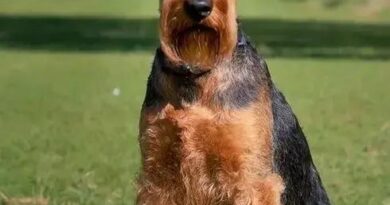What is big dog breeds
What Are Big Dog Breeds?
Big dog breeds are typically defined as those breeds that weigh over 50 pounds when fully grown. These dogs are often characterized by their larger size, strength, and unique physical features. They can vary significantly in temperament, energy levels, and care requirements, making them suitable for different types of families and lifestyles. Understanding what constitutes a big dog breed is essential for potential dog owners who are considering adding a large canine companion to their home.
Characteristics of Big Dog Breeds
Big dog breeds often possess distinct physical characteristics that set them apart from smaller breeds. These characteristics include a larger skull, longer limbs, and a more robust body structure. Additionally, many big breeds have a thicker coat and a more pronounced musculature. Their size can also influence their behavior, as larger dogs may require more space to move around comfortably and may have different socialization needs compared to smaller breeds.
Popular Big Dog Breeds
Some of the most popular big dog breeds include the Labrador Retriever, German Shepherd, Golden Retriever, and Rottweiler. Each of these breeds has its unique traits and qualities that appeal to dog lovers. For instance, Labrador Retrievers are known for their friendly nature and intelligence, while Rottweilers are often recognized for their loyalty and protective instincts. Understanding the specific traits of these breeds can help potential owners choose the right fit for their lifestyle.
Temperament of Big Dog Breeds
The temperament of big dog breeds can vary widely. Some breeds, like the Great Dane, are known for their gentle and friendly demeanor, while others, such as the Doberman Pinscher, may exhibit more protective and assertive traits. It’s crucial for prospective owners to research the temperament of specific breeds to ensure they can provide the appropriate environment and training. Socialization and early training play a significant role in shaping a big dog’s behavior.
Exercise Needs of Big Dog Breeds
Big dog breeds generally require more exercise than their smaller counterparts. Regular physical activity is essential to keep them healthy and prevent obesity, which can lead to various health issues. Activities such as long walks, runs, and playtime in a secure yard are vital for their physical and mental well-being. Owners should be prepared to dedicate time each day to meet their big dog’s exercise needs.
Health Considerations for Big Dog Breeds
Health considerations for big dog breeds can differ from those of smaller breeds. Larger dogs are prone to specific health issues, such as hip dysplasia, heart problems, and certain types of cancer. Regular veterinary check-ups, a balanced diet, and maintaining a healthy weight are crucial for preventing these issues. Potential owners should be aware of the common health concerns associated with the breed they are considering.
Grooming Requirements for Big Dog Breeds
Grooming requirements for big dog breeds can vary based on their coat type. Breeds with long or thick fur may require more frequent brushing to prevent matting and reduce shedding. On the other hand, short-haired breeds may need less grooming but still benefit from regular baths and nail trimming. Understanding the grooming needs of a specific breed is essential for maintaining their overall health and appearance.
Living Space for Big Dog Breeds
When considering a big dog breed, it’s important to evaluate your living space. Larger dogs typically thrive in homes with ample space to move around. While some big breeds can adapt to apartment living, they still require regular outdoor exercise and playtime. A secure yard is ideal for big dogs, allowing them to roam freely and burn off energy. Owners should ensure their living environment meets the needs of their large canine companions.
Training Big Dog Breeds
Training big dog breeds can be both rewarding and challenging. Due to their size and strength, it’s essential to establish consistent training from an early age. Positive reinforcement techniques work well with most big breeds, helping them learn commands and proper behavior. Socialization is also crucial, as it helps prevent behavioral issues and ensures that big dogs are well-adjusted in various situations.
Choosing the Right Big Dog Breed
Choosing the right big dog breed involves considering various factors, including lifestyle, activity level, and family dynamics. Prospective owners should assess their ability to provide the necessary care, exercise, and training for a large dog. Researching different breeds and their specific needs can help individuals make an informed decision, ensuring a happy and fulfilling relationship with their big canine companion.




